All about the Decembrist (Schlumberger)
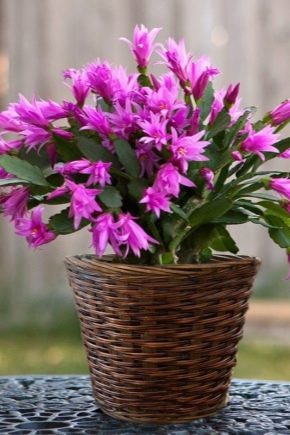
The Decembrist, also known as Schlumberger and Zygocactus, is one of the most unusual representatives of the cactus family. This flower has absolutely atypical external data for cacti: it has no needles at all, and many thin, interconnected plates, which many consider to be leaves, are nothing more than stems. In the world of indoor floriculture, these plants are loved for their undemanding conditions of maintenance and their amazing ability to abundant and lush winter flowering. In this article, we will talk in detail about the features of the Decembrist and its types, agricultural cultivation techniques, breeding methods and rules of care.
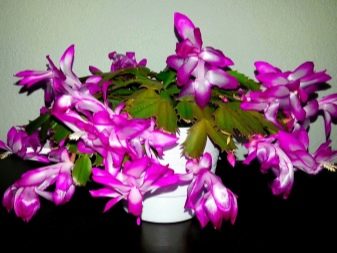
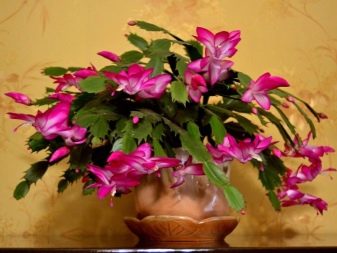
Name history
The Decembrist has many names, both official biological and unofficial folk, which he received due to his unique feature - flowering in winter. Although the growing season for these cacti lasts from November to January, its peak falls precisely in December, therefore they are popularly called "Decembrins", "Decembrists", "Christmas", "Christmas cacti". In accordance with modern biological systematics, the scientific name of the Decembrist is Schlumberger. For a long time, representatives of the Russian botanical community persistently referred to it as zygocactus, despite the fact that it was known as a Schlumberger in the rest of the world from about the middle of the 19th century.
In 1858, Charles Antoine Lemaire, a botanist from France, named this genus of epiphytic cacti Schlumbergera in homage to his compatriot, friend, colleague and cactus collector Frederick Schlumberger.
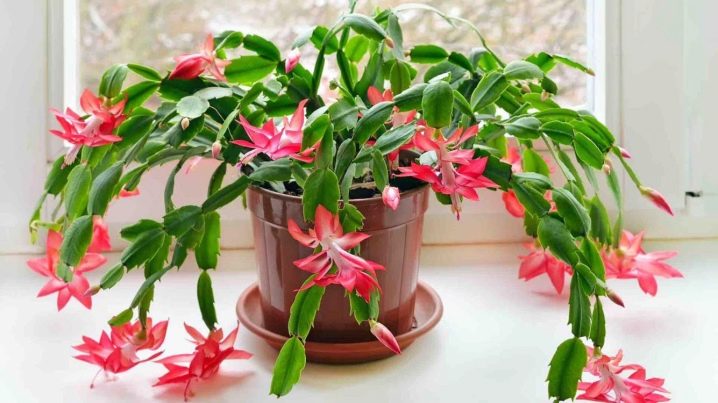
It was he who was the first to prove the direct relationship of the Christmas tree with cacti, and in a rather original way, given that at that time the DNA molecule of life had not yet been discovered. He inoculated the Decembrist peresky prickly - one of the oldest cacti with real leaves, and not their version in the form of needles, modified under the influence of natural and climatic factors. The experiment was a success, since the plant did not even think to die, but, on the contrary, began to bloom, and besides, it was surprisingly abundant. Today, in literary sources, the Decembrist is called both Schlumberger and Zygocactus. - this is one of the synonymous variants of the official name. The epiphyte owes its name zygokatus ("zigon" in Greek "rocker") to the arched shape of the stems, which previously gave only a couple of branches, unlike modern varieties that can branch three or even more.
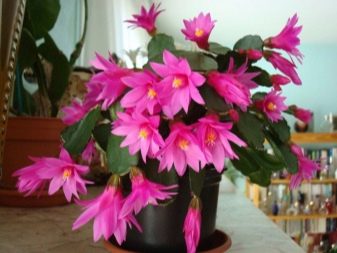

Description
The Schlumberger range is South America, in particular Brazil. Its wild relatives prefer moist tropical evergreen forests, where they lead an epiphytic lifestyle in symbiosis with other plants, attaching to the trunks or root system of trees. The Decembrist is a beautifully flowering, leafless, semi-shrub plant with a large number of segmented leaf-like flattened or trihedral leathery shoots with a fleshy texture, reaching a length of 0.5 m.When flowering, their tops are covered with monosymmetric flowers 5-8 cm in size with a multi-tiered corolla of a star-shaped shape, in which filaments strongly protruding forward.
Under natural conditions, due to the long tube of flowers in zygocactus, only tiny representatives of the hummingbird family and certain species of hawk moth (hummingbird butterflies) can cope with their pollination. The flowering period differs in length, as it can take 6 to 8 weeks for the buds to open. However, the beauty of blossoming flowers can be admired for a maximum of 4-5 days, since after this time they wither.
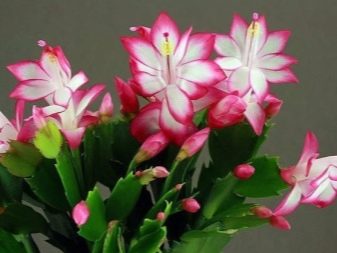

A Christmas tree is often mistaken for a hathiora - an indoor flower that is very similar to him and the closest relative. Previously, this plant was called Ripsalidopsis, its modern scientific name is hatiora garner. It is popularly called the "Easter cactus" because it blooms in the spring.
Although both plants are succulents from the cactaceae family and are short epiphytic shrubs, they look different.
The difference in structure between them is especially noticeable during the growing season. In representatives of the Schlumberger genus, during flowering, the apical part of the jointed shoots is covered with red-colored long-tubular, often asymmetrical flowers, while in the Ripsalidopsis, the shape of the flowers is completely different - stellate or funnel-shaped, and they are formed not at the end, but throughout the segments.
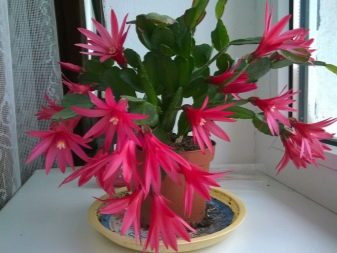
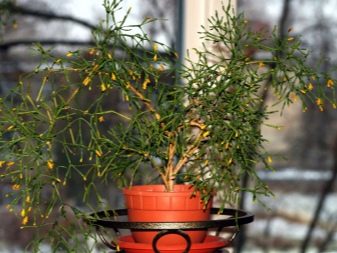
Types and varieties
The species diversity of zygocactus includes 9 items. Let us dwell on some of them in more detail.
Truncated (Trunkata, chopped off)
When it comes to the Decembrist, then, as a rule, this type is meant. Its stems grow to a maximum of 0.4 m. Usually they are painted in a pale green color, although in some specimens the light green shade of the leaves gives off a slight reddening. The length of one segment of the shoot is on average 4.5 cm, width - 2 cm, and the fragments themselves have a serrated edge, but the teeth are completely thornless.
A bush with beautifully hanging shoots on all sides takes on a particularly spectacular look during the flowering period, when the segmented leaf segments are covered with buds and elongated flowers with petals slightly bent back. The color can be very different - from classic white and pink to light and dark purple and even yellow. There are also plants with colorful flowers.
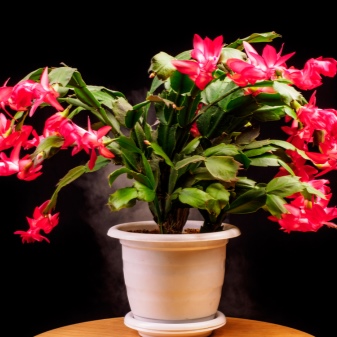

Buckley
A popular variety with rounded teeth on segments of glossy shoots of rich green flowers. It does not grow in the wild. The bush reaches a height of 0.5 m. It begins to bloom in November and ends in March. The ends of the stems are covered with multi-tiered tubular symmetrical flowers of predominantly delicate pink color, although white and lilac colors are also found.
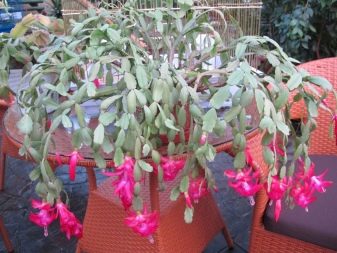
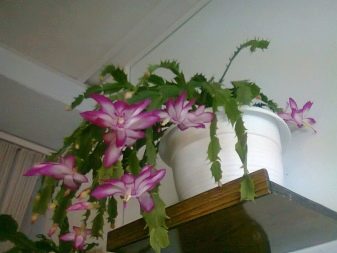
Opuntia
The species has the greatest external resemblance to a cactus, since the stem, consisting of tear-shaped segments, is covered with numerous areoles with spines growing from them. Other features are the increased thickness of the shoot fragments and a longer flowering period compared to other species. Its representatives bloom from March to April, forming buds and flowers, colored pink with a beautiful purple tint.
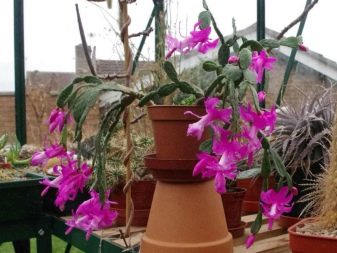
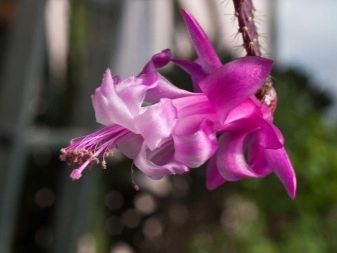
Russeliana
This species stands out among the rest of the length of stems that can grow up to a meter. The shoots themselves are saturated green, glossy with a fleshy texture and rounded miniature segments without a serrated edge 3-3.5 cm long, up to 2 cm wide.The bush grows in height by a maximum of 30 cm.
Common colors are pink and red with a fade to purple.
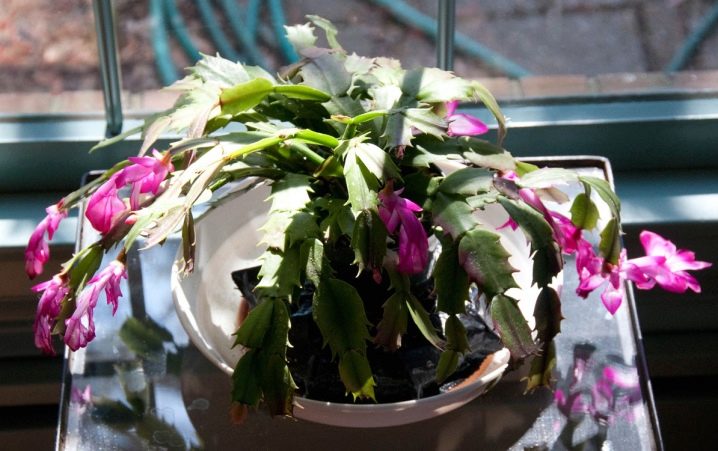
Gertner
In this variety, the stems consist of segments 6.5-7 cm long. The flower petals are pointed. The color is orange with the presence of a reddish tint.
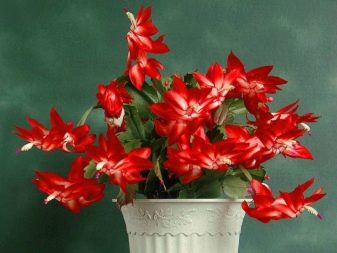
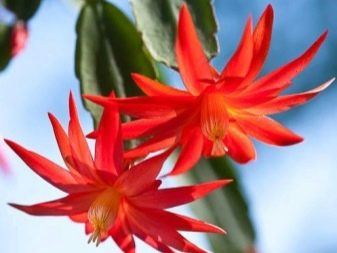
The varietal variety of Schlumberger impresses with the widest range of colors and petal shapes (wide, narrow, oval, simple, double, with a pointed tip), which continues to be replenished every year with many new hybrids. We offer you to get acquainted with the most popular and memorable varieties.
- "White Christmas". A hybrid with snow-white flowers and a long flowering period of more than two months. Due to its high decorative qualities, the variety has won worldwide popularity.
- "Kris Kringle". Representatives of this popular variety can be recognized by the compact crown of the bush and miniature short fragments of shoots. The color of the flowers is bright red.

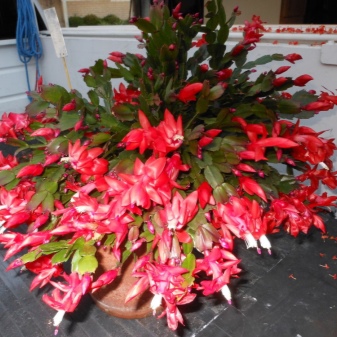
- "Pasadena". A very showy shape, characterized by an intense red color of flowers with large petals.
- "Santa Cruz". The variety attracts attention with expressive glossy flowers of rich orange color with a reddish undertone. During the growing season, flower ovaries immediately acquire a bright color, and due to this, the bush - a spectacular appearance.
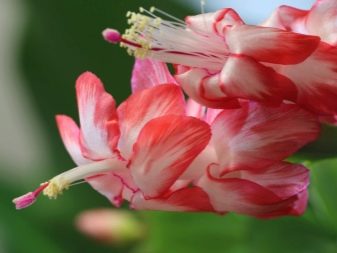

- "Christmas Fantasy". An extremely popular variety, which is valued for its beautiful bush shape and pleasant-looking salmon color of flowers.
- Lavender Doll. Hybrid form available for single, group and ampel cultivation. Differs in the compactness of the bush. The stems are made up of short segments. Large-sized flowers are painted in a delicate lavender shade.
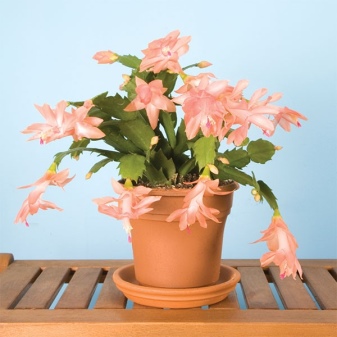
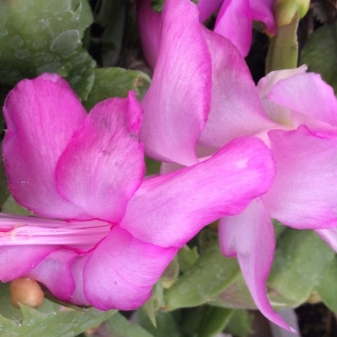
- Lavender Fantasy. Variety with lilac-pink flowers, but with wider petals and a shortened flower tube. Stem segments are shorter than those of the previous form.
- "Windsor". Compared to other hybrids, representatives of this variety have much larger flowers. They are painted in a lilac shade with the lightest pink undertone.
- Cambridge. The variety attracts attention with a bright yellow color of flowers, atypical for a Decembrist, the petals of which are bent back.
Shoots are upright.
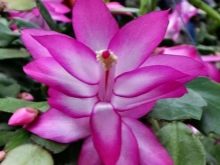
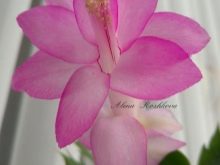

How to choose?
The range of exotics offered by flower shops is simply huge today. To avoid the disappointment of a purchase, there are a number of things to consider when choosing a Schlumberger.
- Appearance. It is necessary to inspect the plant. The presence of brown spots on the shoots, dull color of the stems, shriveled shoots are a reason to refuse to buy it.
- Health status. It is important to make sure there are no pests, especially mealybugs. They can be identified by traces of vital activity in the form of white fluffy secretions.
- The size of the bush, flowers and shoots. Here it is necessary to build on the size of the window sills and the availability of free space in the room. Dwarf varieties with compact crowns take up a minimum of space. In ampelous (curly) forms, stems with flowers can hang by 1 m or more. There are large-flowered varieties, some of which bloom more than once a year.
The purchased copy must be kept in quarantine for 1-1.5 months and only then placed with the rest of the plants.
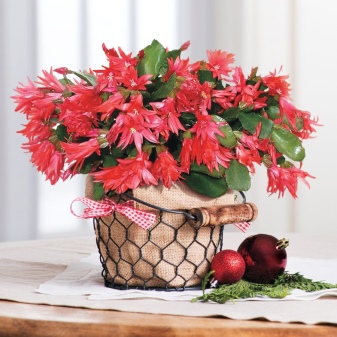
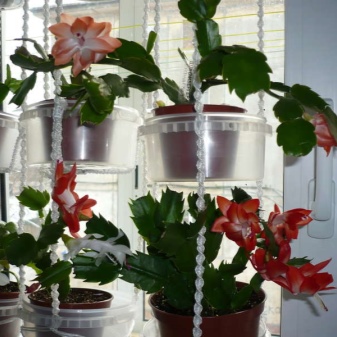
How to grow?
The Decembrist is the perfect green pet. Everyone can grow this flower, and it's easy to take care of it. Schlumberger has minimal requirements for conditions of detention and has a phenomenal, genetically determined vitality. But since the biological features of zygocactus growing in tropical forests are fundamentally different from the anatomophysiological properties of cacti living in deserts, then the agricultural technology of these plants will be completely different. Consider the features of growing a Christmas tree at home and the key points of caring for it.
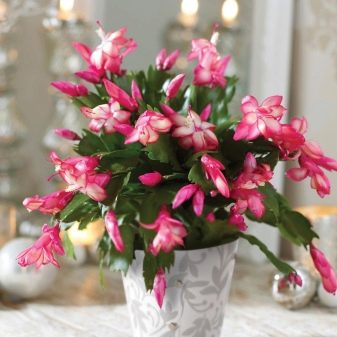
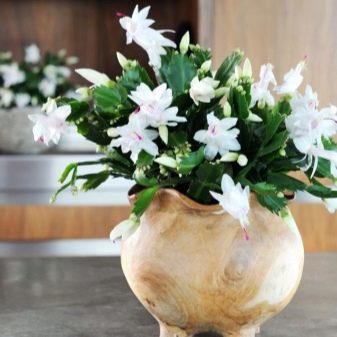
Where to place?
The Decembrist needs good, but diffused lighting. Being in direct sunlight is contraindicated for him and provokes burns of the stem segments with their subsequent death. The optimal place for placing a flower is a window sill with windows oriented to the south-east, east, south-west. Rotating the resting pot regularly ensures that the shoots grow evenly and form a beautiful bush.
With the arrival of summer, the Decembrist can be transferred to a loggia, balcony, put on a terrace or just outside in a place with good lighting and limited access to wind and direct sunlight. The beginning of the flowering period for the Decembrist falls on the last weeks of autumn.
In the budding phase, moving the container with the plant is unacceptable, since it reacts to such treatment by dropping the buds.

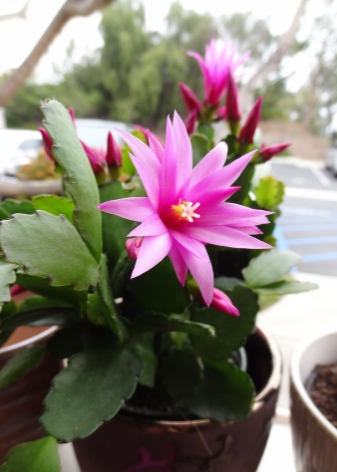
Temperature
The Decembrist feels comfortable at t 19-25 ° C. In spring and summer, zygocactus actively grow their green mass, so they need a temperature of 22-25 ° C. Keeping the plant in a cool place before flowering at t 13-16 ° С contributes to the accumulation of vitality and energy, thereby increasing the quality of flowering.
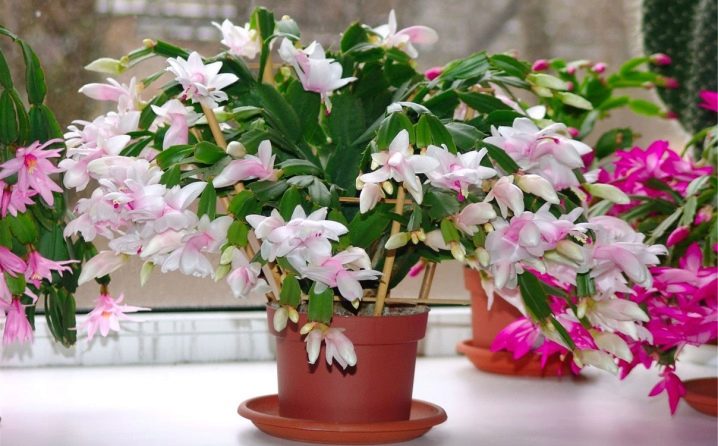
Humidity and water regime
The well-being of the Schlumberger depends on the regularity of watering. Moisturize them moderately every week, 1 time, if necessary, then more often. Do not allow the earthen coma to dry out. The Decembrist, as a native of equatorial forests, loves humid air. In the heating season, the problem of insufficient humidity is solved by daily spraying or placing a container with a plant in a pallet with wet sphagnum, perlite, vermiculite.
The water regime in different phases of the Decembrist's life will be different.
- Active growth phase (spring-summer season). Plants are transferred to the bottom irrigation mode, draining excess water from the pan after half an hour. At this time, it is recommended to systematically spray the flowers, and when it is hot outside, arrange for them to bathe in the shower.
- Flowering period (September-November). From the second half of September, watering is reduced. In November, the flowering Decembrist is watered, dispensing with spraying.
- Resting phase (at the end of flowering until early spring). A faded plant is rarely watered, about once every 10-14 days.
Water for irrigation should be clean (settled, filtered) and t 23-25 ° C.
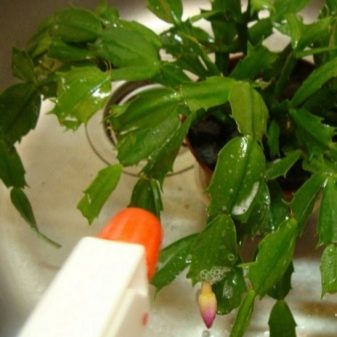
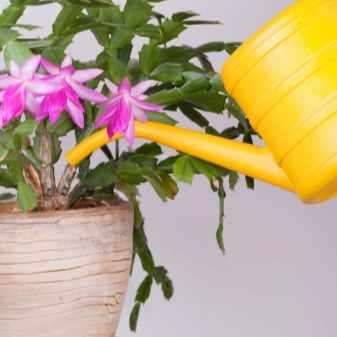
Top dressing
Schlumberger fed from spring to autumn monthly 1-2 times. For these purposes, they use mineral complexes for succulents and cacti or special liquid organic fertilizers of industrial production. Before applying them, the soil must be moistened so that it is easier for the plant to process macro- and microelements in the mixtures. In winter, top dressing is prohibited.
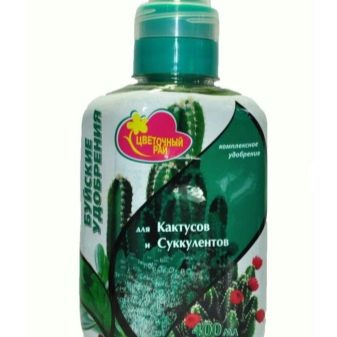
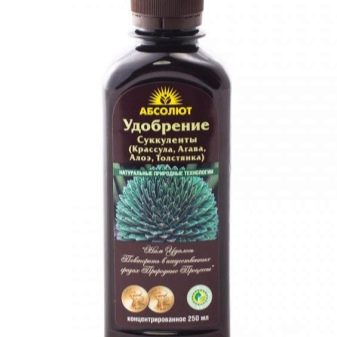
How to transplant?
Young, fast-growing plants need an annual transplant, while healthy adult flowers can be transplanted every 4-5 years, depending on the characteristics of the variety. Transplanting is recommended after the plant has bloomed between March and April. Since the zygocactus, due to its epiphytic lifestyle, has an underdeveloped superficial root system, a medium-sized pot is initially selected for it, filling it with drainage by 1/3.
The flower is transplanted into containers with a diameter 2 cm larger than the previous one, taking into account also the height of the bush and the direction of growth of the shoots.
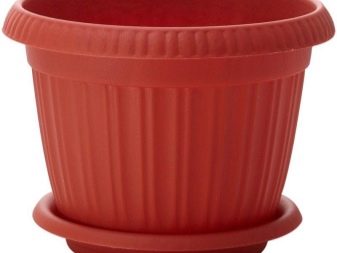
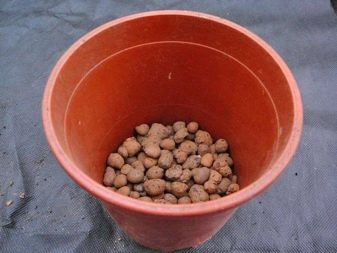
Decembrists grown as ampelous plants need wide pots, while flowers with erect shoots need deeper and narrower containers. The Decembrist, like an epiphyte, requires a fertile, light, slightly acidic soil with good water-holding capacity, water and air permeability. You can use store soil for succulents and cacti by adding ¼ coarse sand to it, or a homemade soil mixture: peat + leaf humus + baking powder (coarse sand, peat, perlite) in a ratio of 2: 1: 1. Crushed coal is added to the earth mixture. as a disinfectant and chipped brick or expanded clay gravel to improve the culvert properties.
In order to properly transplant the zygocactus, it is carefully removed from the container while preserving the earthen coma, the excess soil is cleared, the rotten roots are removed and placed in a new pot. It remains to water the plant properly.
For more information on how to transplant a Decembrist, see the next video.
Pruning
Schlumberger pruning is practiced from March to April, pinching by hand without the use of tools, old long shoots. The excess parts of the stems are broken off or twisted, thus removing one or a couple of segments. The main tasks of this procedure are to stimulate the growth of flower buds and give the flower a beautiful shape by shortening the non-branching and improperly growing stems (elongated, curved, growing inward). Decembrists, whose owners regularly carry out crown formation, delight with an attractive appearance and lush abundant flowering.
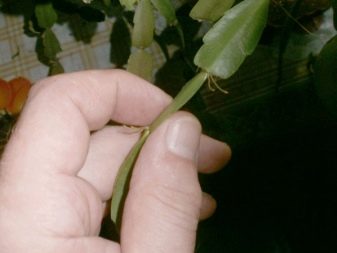

Growing errors
Despite the fact that the Decembrist is an absolutely non-capricious plant in terms of conditions of maintenance and care, it, like any green organism, reacts negatively to violation of light, water and temperature conditions. You can notice this by the changes in appearance.
- The stems became lethargic and became pale in color - this is a clear sign of a lack of sunlight and moisture, sometimes - the abuse of fertilizers.
- Reddish color of shoots - this happens when the Decembrist was exposed to direct sunlight or due to phosphorus starvation.
- Schlumberger does not bloom - this is direct evidence of improper organization of the dormant period, when the plant needs to provide coolness and shade, as well as reduce the frequency of watering to a minimum.
- The appearance of erosion with redness on the segments of the shoots - this happens with a severe burn of a flower due to exposure to the open sun.
- Loss of barrel stability - this happens due to the death of roots due to irrigation using cold water, exposure to the open sun
Or feeding with high concentrations of fertilizers.
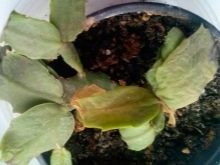
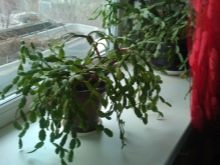
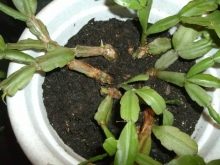
Diseases and pests
Keeping the Decembrist in unfavorable conditions (waterlogged soil, alkaline substrate, staying in old soil) makes it vulnerable to pathogens and attacks of harmful insects.
Disease / pest | Signs of defeat | Treatment and methods of struggle | Prevention measures |
Fungal infections (fusarium wilting, late blight, rhizoctonia) | The shoots turn gray, turn pale, individual segments fall off, the flower withers, despite the moist soil. | Use for spraying fungicides such as "Topaz", "Vitaros", "Maxima", "Alirina-B", "Ordana". | It is necessary to regularly inspect the plant in order to diagnose the disease in time and begin treatment. |
Diseases of bacterial etiology | The formation of weeping spots mainly near the root collar. | It makes sense to treat the plant only at the very beginning of the disease. It is necessary to get rid of the infected shoots and carry out the treatment using the means "Gamair", "Fitosporin-M", "Bayleton". In cases of severe damage, the flower is disposed of. | Systematic monitoring of the condition of flowers and visual inspection allow you to identify the disease at the initial stages. |
Phytophagous spider mites | Leaves fall, shoots are covered with a rusty coating. | They are treated with means such as "Aktellika", "Fitoverma", "Neorona". | |
Shields | The appearance of brown spots on the shoots. | With a slight defeat, the flower is washed with soapy water, in case of severe damage, insecticides are used, in case of a mass attack, they are destroyed. | |
Mealybugs | Formation of whitish cotton-like lumps between the stems. | Medical spraying is carried out using insecticides. |
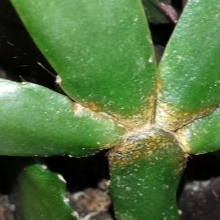
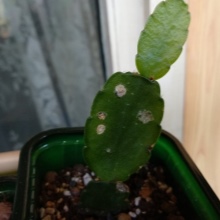
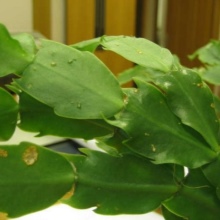

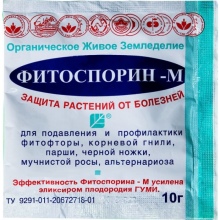
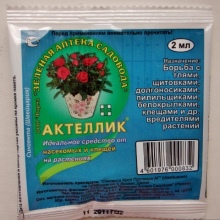
Reproduction
Cuttings
The easiest way to propagate a Schlumberger vegetatively is using stem cuttings consisting of a couple of three segments. They do this after the formation of the crown, when there are a lot of cuttings of the shoots, or from April to May in the phase of active vegetation of plants.
Cuttings are separated from the mother flower, dried for 2 days and rooted in water or in moist soil under a greenhouse.
The container with sprouts is placed in a shaded place at t 17-20 ° C, remembering to ventilate the greenhouse in order to avoid rotting of cuttings due to the accumulation of condensation and water the plant.
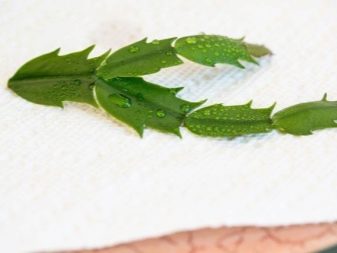
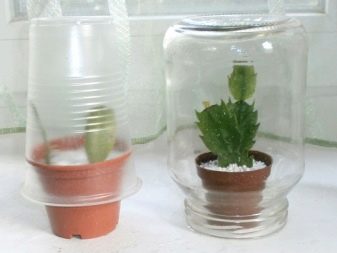
Seeds
New hybrid Schlumberger varieties are grown from seed. Getting your own seeds is troublesome, as the plants need pollination, so purchased seeds are usually used. The optimal time for sowing is from May to June. Pre-sowing treatment of seed implies its warming up at t 50-60 ° C and soaking in a biostimulant solution. Next, the seeds are placed in a container with wet sand or a soil mixture of sand and earth, without deep embedding, under a greenhouse. Inside, they maintain a temperature of 23-25 ° C, water the seedlings and arrange for them to be regularly ventilated. It takes from 3 weeks to a month to wait for the appearance of the first shoots. After 1.5-2 months from the moment the shoots appeared, the plants dive. Flowering can be expected only 2-3 years after sowing.
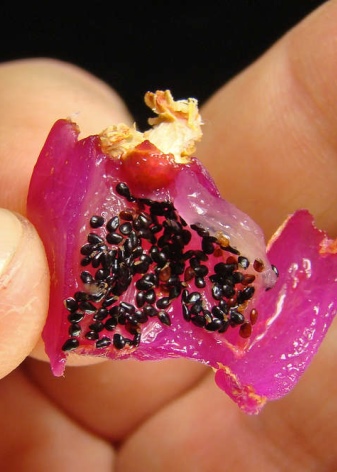
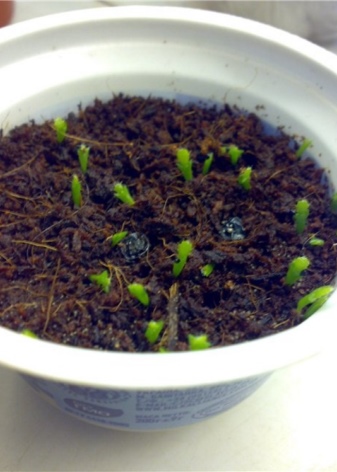
Vaccination
To get the standard form of the Decembrist, it is grafted onto other cacti such as prickly pear, cereus, pereskii. To do this, cut off the upper part of the cactus rootstock, place it in the cleft, the Decembrist rootstock in the form of a cutting of three fragments and fix it with a toothpick or cactus thorns, and then wrap it with a cloth or thread. It takes from a crescent to 3 weeks for the scion to grow together with the stock. After that, the bandage is removed and the standard zygocactus is tied to one or two supports for the trunk and crown so that it does not break at the site of inoculation due to its weight. Compared to ordinary Decembrists, the plants on the stem have much more lush flowering.
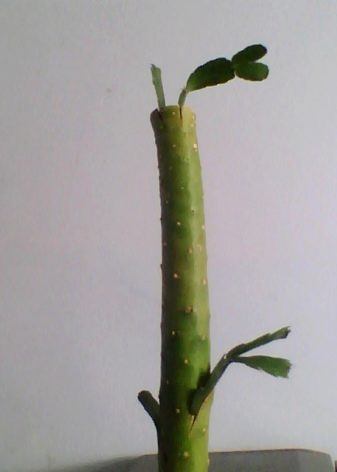
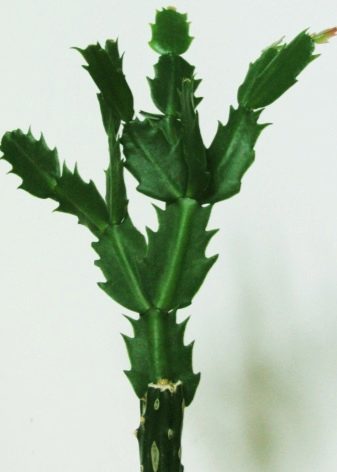
Florist tips
Most flower growers unanimously agree that the Decembrist is a highly decorative plant that is easy to care for and fits perfectly into any interiors. Those who are just planning to acquire this flower should study some of the intricacies of their cultivation and maintenance.
- Decembrists prefer to grow in a permanent place. Moving for them turns into real stress, as a result of which they can stop blooming.
- Schlumberger needs periodic rejuvenation. It is enough to pluck a small part of the shoot and root it in the ground. These plants are characterized by high survival rate, therefore, in a maximum of a couple of years, the young Decembrist will bloom.
- Contrary to popular belief, the ideal place for a Decembrist is not a window sill, but special flower stands installed in the immediate vicinity of the window.
- Unwillingness to bloom is characteristic of cacti growing near / on northern windows or in the far corners of the room. At the same time, the plants themselves look completely healthy.
- Schlumbergers do not like drafts, temperature surges and ... when doors are slammed.
If the Decembrist grows at the door, then sooner or later he begins to mope, since the vibration when opening / closing the doors harms the delicate surface roots of the exotic epiphyte.
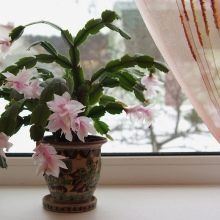
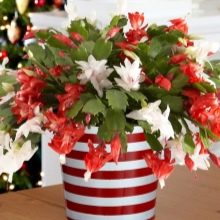

For more information on how to grow a Decembrist, see the next video.























































The comment was sent successfully.